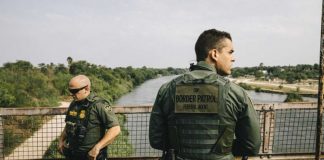Star Trek, T.J. Hooker, $#*! My Dad Says
Advertisements:
$150 Million
"You have to create your life. You have to carve it, like a sculpture."
William Shatner is as famous for simply being William Shatner as he is for anything else. This is not to undersell his abilities as an actor, but the man's personality is so naturally appealing that it is hard to imagine Shatner not picking up a legion of adoring fans no matter what he chose to do for a living. From singing to Star Trek (1966-69) to TekWar (1989), there's a cool, cocky warmth to Shatner that always seems to shine through.
Shatner Before Kirk
William Shatner was born March 22, 1931 in Montreal, Quebec, in Canada to clothing manufacturer Joseph Shatner and mother Ann. Shatner attended Willingdon Elementary School and West Hill High School, and first studied acting in the Montreal Children's Theater, though his academic career was first devoted to economics. He graduated from the McGill University Faculty of Management as a Bachelor of Commerce. Following graduation he spent some time working as a business manager at Montreal's Mountain Playhouse. He cut his teeth studying Shakespeare at the Canadian National Repertory Theatre, then went on to perform at Ontario's Stratford Shakespeare Festival, featuring in productions of Henry V and Oedipus Rex before blazing a trail to Broadway in 1956, featuring in Tamburlaine the Great.
Around this time he began his TV acting career, as well, featuring on the Canadian version of The Howdy Doody Show (1947-60) as Ranger Bob. The 1950s and 60s being the heyday of the anthology series, there was plenty of work to be had on shows like Alfred Hitchcock Presents (1955-65) and of course, The Twilight Zone (1959-64), where William Shatner featured in the classic episode "Nightmare at 20,000 Feet" (1963).
Meanwhile, Shatner took what film work he could find, He mostly featured in various B-films for the drive-in market, but did have a memorable turn as the villainous Adam Cramer in Roger Corman's The Intruder (1962), a frank and fearless look at racial issues in America, filmed years before mainstream Hollywood felt safe approaching the subject.
While Shatner already had a respectable resume by the mid-1960s, it goes without saying that Star Trek (1966-69) was the moment that changed everything for the young actor.
Captain James T. Kirk Of The USS Enterprise
"I think of doing a series as very hard work. But then I've talked to coal miners, and that's really hard work."
In retrospect it may be a bit surprising to learn that Star Trek was far from a runaway hit when it first aired. In fact, even the original pilot was something of a flop. "The Cage," filmed in 1964, turned out to be only a rough sketch of what the show was to become. There was no Captain Kirk to be found, instead we had Captain Pike. Spock was featured with more elaborate alien makeup than the ears and eyebrows to which we've all grown accustomed, and NBC's first reaction to the show was that it was "too cerebral." However, they felt that there was something special here, and that it might work with a little retooling. They ordered a second pilot, an unconventional choice then, and just as unconventional in the modern studio system. The entire cast was replaced except for Leonard Nimoy and Majel Barrett, introducing Captain Kirk played by William Shatner. Shatner's cowboy swagger turned out to be one of the missing ingredients NBC was looking for, counterbalancing the show's intellectual streak with a more conventional adventure hero who promised action and romance along with the heady sci-fi plotlines.
Before the show even aired, Trek's production company, Desilu Productions, nearly canceled the project entirely. Lucille Ball knew how to produce a half hour sitcom, but between Star Trek and Mission: Impossible (1966-68), the company was essentially producing two hour-long mini-movies a week for television. Fortunately they ultimately decided to keep the show.
When the series first ran, it struggled to find an audience. The series would frequently rank in the thirties, forties and fifties in Nielsen ratings. This was during a time when there were only a few channels, and networks could not justify the resources expended towards any series that wasn't an instant mega-hit. The initial run went on for three seasons before being canceled in 1969.
For Shatner, it was back to B-movies for a time, appearing in films like The Devil's Rain (1975) and Kingdom of the Spiders (1977), appeared in television commercials and showed up on the occasional episode of shows including The Six Million Dollar Man (1973-78) and Mission: Impossible. He even made his way to Italy to star in a spaghetti western, White Comanche (1969), playing a dual role as the heroic Johnny Moon and his evil twin Notah. Star Trek would eventually go on to become one of the most important television shows in history, but at the time, Shatner was just the lead on a sci-fi flop, rebuilding his career from the ground up.
While Shatner struggled to find work throughout the 1970s, Trekkie culture as slowly growing. Syndicated reruns would help the series to become a cult favorite, and Shatner's fame grew even as he had trouble finding meaningful parts in television and film. He made appearances at early Star Trek conventions and finally, in 1979, would star in Star Trek: The Motion Picture (1979), launching a new boom period for the franchise. A Saturday Night Live (1975-present) sketch would establish Shatner's playfully-antagonistic relationship with his fandom, telling a room full of Trek fans to "Get a life."
The Star Trek film franchise gave Shatner's career a second wind, and soon he had the lead role on police drama T.J. Hooker (1982-86). The show gave Shatner his second shot at leading a TV series, and his first shot at the director's chair, stepping behind the camera for several episodes and going on to direct Star Trek V: The Final Frontier (1989).
In the 1980s, Shatner would add the word "writer" to his resume, writing TekWar (1989), based on a spec screenplay he had developed before shooting Star Trek V. TekWar launched a franchise stretching over several books, TV movies, a series, and even a video game released in 1995.
"Writing is truly a creative art - putting word to a blank piece of paper and ending up with a full-fledged story rife with character and plot."
Since the first run of Star Trek films, William Shatner's job has simply been to be William Shatner. On albums like Has Been (2004), in documentaries like William Shatner Presents: Chaos on the Bridge (2015), and even voicing the wake-up call for the crew of the Space Shuttle Discovery, William Shatner is not an actor that you hire to disappear into a role, but one you bring on board to be William Shatner.
"Success should always be just beyond your grasp."
->





